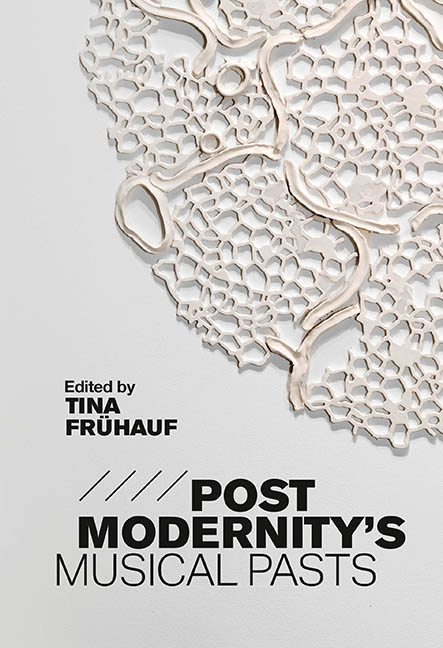Book contents
- Frontmatter
- Dedication
- Contents
- List of Illustrations
- List of Music Examples
- List of Contributors
- Acknowledgments
- About the Cover
- Introduction
- Part I Time and the (Post)Modern
- Part II Manifestations of History
- Part III Receptions of the Past
- Part IV Nostalgias and the Temporalities of Belonging
- Bibliography
- Index
6 - (Neo-)Schenkerism and the Past: Recovering a Plurality of Critical Contexts
Published online by Cambridge University Press: 28 April 2020
- Frontmatter
- Dedication
- Contents
- List of Illustrations
- List of Music Examples
- List of Contributors
- Acknowledgments
- About the Cover
- Introduction
- Part I Time and the (Post)Modern
- Part II Manifestations of History
- Part III Receptions of the Past
- Part IV Nostalgias and the Temporalities of Belonging
- Bibliography
- Index
Summary
And if they could talk to one another, don't you think they’d suppose that the names they used applied to the things they see passing before them?
Plato, Republic, Book VII, 514bThe theories of Heinrich Schenker (1868–1935) have had no small impact on musical thought over the past seventy years, no doubt due in part to the interest that both the man and his writings have attracted from different populations: not just music theorists and analysts, but also cultural historians, cognitive scientists, linguists, performers, and aestheticians. As is widely known, Schenker travelled from the outer reaches of the Austro-Hungarian Empire at the end of the nineteenth century to live, study, and work in its capital, Vienna. It was from there that he produced an impressive body of musical writings, including critical editions, analytical pamphlets, and a tripartite tome titled Neue musikalische Theorien und Phantasien that explored what he saw as the essence of music's fundamental laws of harmony, strict counterpoint, and free composition. Bringing together worldviews that encompassed the tradition of nineteenth-century German metaphysics and Romanticism as well as a burgeoning age of aesthetic and philosophic modernism, Schenker ultimately proposed a theory of musical genius using his theory of the Ursatz, a fundamental musical organism embodying a synthesis of tonal music's core attributes—the linear unfolding of the consonant triad counterpointed by music's essential bass progression of the tonic and the dominant. For Schenker, this synthetic unity governs every stage of the creative process and also every hierarchic level of a composition, from the very surface of the music to its deepest recesses. ‘The combination’, Schenker writes:
of fundamental line and bass arpeggiation constitutes a unity. This unity alone makes it possible for voice-leading transformations to take place in the middle ground and enables the forms of the fundamental structure to be transferred to individual harmonies. Neither the fundamental line nor the bass arpeggiation can stand alone. Only when acting together, when unified in a contrapuntal structure, do they produce art.
At least within North American musicological discourse, few have undergone so sustained a critique as Schenker has. Many may even question whether his ideas can still be taken seriously in an age that is ubiquitously inflected by what Jean-François Lyotard famously dubbed the ‘postmodern condition’.
- Type
- Chapter
- Information
- Postmodernity's Musical Pasts , pp. 119 - 137Publisher: Boydell & BrewerPrint publication year: 2020



